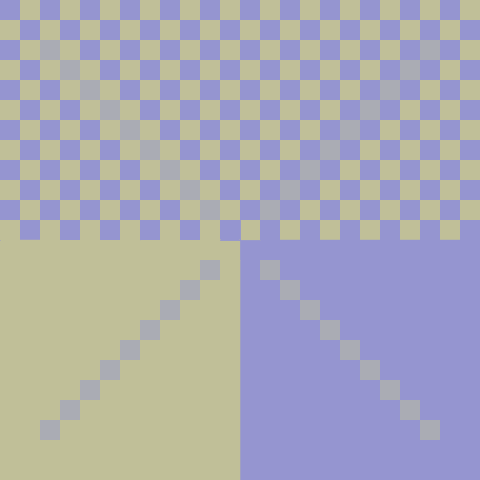
Color is a phenomenon of our consciousness which is only weakly related to measureable physical variables in the world around us. This aspect of our vision is not obvious, because nature usually presents us with a wealth of patterns and wavelength distributions in each visual scene. However, we can set up artificial situations which make the point more obvious. The pattern below is one such case.

The diagonal pattern of little squares has a uniform light distribution which in more normal situations would be perceived as neutral gray. If you cover the bottom half, the upper arms of the X appear yellower on the left and bluer on the right. On the other hand, if you cover the top half, the lower arms appear bluer on the left and yellower on the right. In both cases, the little squares are adjacent to the same colors: yellow on the left half of the figure and blue on the right half. The brain compares each individual grey square to squares (or in the lower case where there are no other squares, the background) in the same configural position in the pattern, and "pushes" its color "away" from the configural color in order to consciously "discover" the pattern change. This action has great survival value in recognizing pattern defects and camouflage attempts by both prey and predators.
One might be tempted to call these color shifts "illusions." I would prefer to say all colors are real brain actions and illusions at the same time. All colors have only a mapping relation with the "real" world, and the mapping algorithm is very complex and not clearly understood. Local color depends on all patterns present in the visual field. If there were no pattern, there would be no color. The same can be said for the other three aspects of our vision: shape, location, and motion.
Here are some similar test patterns in different colors:
green-magenta;
red-cyan;
a
gradient: the H has uniform chromaticity (a word for wavelength
distribution).
Here is a great
motion perception page.
-Lawrence Anderson-Huang, U.T. Physics and Astronomy Department